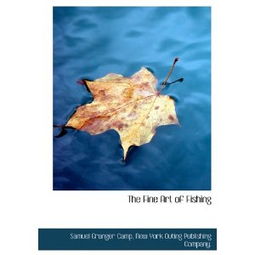Content:
Introduction: Rainy days can often deter anglers from hitting the water, but for those who know the tricks of the trade, the wet weather can actually be a goldmine for catching fish. This article will delve into the art of fishing on rainy days, providing you with a comprehensive guide, complete with step-by-step illustrations, to help you maximize your chances of success.
Understanding Fish Behavior in Rainy Weather: Fish are often more active during rainy weather due to the increased oxygen levels in the water. The raindrops create tiny bubbles that rise to the surface, bringing in more oxygen. This can make fish more susceptible to bait. To take advantage of this, it's essential to understand how fish behave in such conditions.
Step 1: Choose the Right Location Look for areas where fish are likely to congregate during rainy weather. These may include deeper sections of rivers, around submerged logs, or near bridge pilings. The goal is to find areas where fish can seek shelter from the rain while still being near food sources.
Step 2: Adjust Your Tackle During rainy weather, fish may be more cautious, so it's important to use lighter tackle. This means opting for smaller lures, lighter rods, and lighter lines. The lighter setup allows for more sensitivity and reduces the risk of spooking fish.
The Art of Rainy-Day Baiting: The right bait can make all the difference on a rainy day. Here's how to choose and use the best bait for these conditions.
Step 1: Live Bait vs. Artificial Lures Live bait can be more effective on rainy days as it tends to move more naturally in the water, triggering the fish's natural instincts. However, artificial lures can also be effective, especially if you can mimic the action of the natural prey fish are looking for.
Step 2: Selecting the Right Bait For live bait, options like worms, minnows, or leeches are often the go-to choices. For artificial lures, try using spinnerbaits, crankbaits, or jerkbaits that can mimic the movement of insects or small fish.
Step 3: Presenting the Bait When presenting bait, it's crucial to be subtle. Make short, gentle casts to avoid startling the fish. Allow the bait to drift naturally, mimicking the movement of real prey.
Weather and Timing: Understanding the weather patterns and timing can significantly improve your chances of success.
Step 1: Monitor the Weather Forecast Before heading out, check the weather forecast to plan your fishing trip. Aim for days with light to moderate rain, as heavy downpours can spook fish and make it difficult to fish effectively.
Step 2: Time Your Trip Fish are often more active just before and after a rainstorm. This is because the sudden change in weather can create a feeding frenzy as fish rush to consume any food that has been stirred up by the rain.

Safety First: Fishing in the rain requires additional precautions to ensure your safety.
Step 1: Dress Appropriately Wear waterproof clothing, including a rain jacket, waterproof pants, and a hat to keep you dry. Don't forget gloves to protect your hands from the cold and wet conditions.
Step 2: Use Caution on slippery Surfaces Be mindful of slippery surfaces, especially when walking along riverbanks or stepping into boats. Use a sturdy, non-slip footwear to prevent falls.
Step 3: Stay Informed Always carry a fully charged mobile phone with you, and inform someone of your fishing location and expected return time.
Conclusion: Fishing on rainy days can be a challenging but rewarding experience. By understanding fish behavior, choosing the right bait, timing your trip wisely, and taking necessary safety precautions, you can turn a rainy day into a successful fishing adventure. Remember to refer to the provided illustrations throughout this guide to visualize each step and enhance your chances of catching fish in the rain. Happy fishing!












